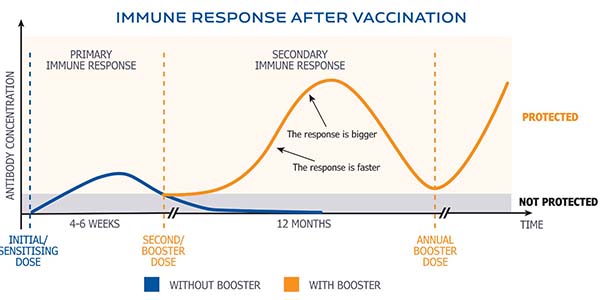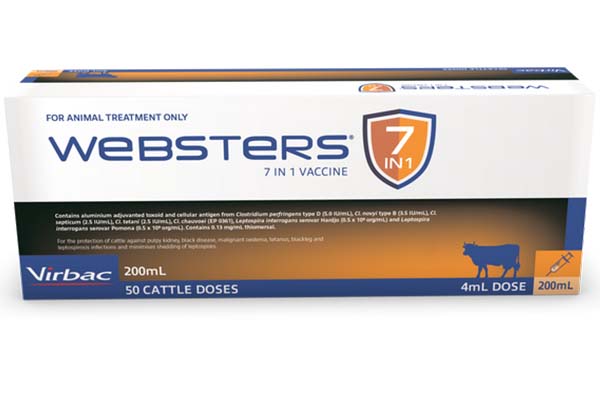As a cattle producer, you might have heard of Leptospirosis, but are you fully aware of how it can affect both your livelihood and your health? In this article, we focus on the serious implications of this often-underestimated disease, examining both the economic consequences on cattle productivity as well as its impact on human health.

Economic impact on cattle productivity
The presence of Leptospirosis (Lepto) in a herd can severely disrupt the profitability of a farm. The disease notably affects the reproductive health of cattle, leading to an increased number of non-pregnant cows. A drop in pregnancy rates can significantly delay a farm's breeding program and genetic advancements.
An example scenario:
Let’s say you have a herd of 100 cows. If the pregnancy rate decreases from 90 per cent (pc) to 80 pc due to Leptospirosis, it results in 10 fewer calves. What’s the financial impact? With each calf potentially earning $800, the loss totals $8,000 just in calf sales.
But it doesn’t end there. There are actually a wide range of broader economic consequences that can result in further losses of farm profitability including:
- reduced milk production;
- higher culling rates due to decreased fertility and health;
- longer calving intervals, affecting yearly production cycles; and
- additional costs from increased veterinary care and disrupted herd management.
Understanding the risks to humans
Leptospirosis is more than just a livestock disease - it's a direct threat to those who work with cattle. This disease spreads through bacteria that are often transferred via infected urine and contaminated water or soil.
Farmers and agricultural workers are particularly vulnerable, risking symptoms that range from mild (similar to the flu) to severe (potentially life-threatening).
People working in abattoirs are also at risk of contracting the disease due to frequent exposure to potentially infected animal blood and tissues. For some people, Leptospirosis can lead to severe long-term effects on human health, which can be debilitating and lead to chronic conditions that can impact quality of life and ability to work.
The solution: an integrated approach
The potential issues and losses, both from an animal and human perspective described above underscore the critical importance of disease prevention through vaccination and herd health strategies.
Here are seven key steps for comprehensive control of leptospirosis and associated risks.
1. Vaccination
- A robust vaccination plan is crucial. Use an appropriate vaccine like Websters 7-in-1 to protect against relevant strains.
2. Hygiene and Personal Care
- Avoid contact with urine.
- Wear appropriate Personal Protective Equipment (PPE).
- Wash and dry hands thoroughly.
- Avoid eating, drinking, smoking, or vaping in areas where there's a risk of contamination.
3. Staff and Visitor Training
- educate all staff and visitors about leptospirosis risks.
- ensure everyone knows how to minimise those risks.
- use signage to reinforce preventative measures.
4. Effluent & Waterway Management
- Control effluent to prevent the spread of bacteria.
- Fence off effluent ponds and waterways.
- Manage effluent spreading carefully.
5. Rodent Control
- Implement and maintain a rodent control program.
- Control rodents to reduce the risk of infection from their urine.
- Secure feed sources to prevent attracting rodents.
6. Introducing New Stock
- Ensure all new animals are fully vaccinated with Websters 7-in-1 before they are introduced to the farm.
7. Other Stock
- If you also have pigs, vaccinate them to prevent them from becoming a source of infection.
The Three Step Gold Standard Vaccination Schedule
- Initial Dose: Calf or previously unvaccinated.
- Booster Shot: Follow up four to six weeks later.
- Annual Revaccination: Essential to maintain ongoing immunity, especially important during high-risk periods such as rainy seasons or when new animals are introduced to the herd.
 Graph showing immune response after vaccination with Websters 7 in 1
Graph showing immune response after vaccination with Websters 7 in 1
Take action now
As a cattle producer, prioritising vaccination with a 7-in-1 vaccine is not just a health measure for you, your family, colleagues and/or staff - it's a crucial economic decision. The cost of the 7-in-1 vaccine such as Websters 7-in-1 is nowhere near the significant financial risks associated with a single case of leptospirosis, let alone a disease outbreak.
By investing a small amount in a cost-effective vaccination strategy, you protect not only your herd's health but also secure your investment, your workforce, and your farm's future.
This article was written by Virbac for Seasons magazine.
Disclaimer - important, please read:
The information contained in this article is given for general information purposes only, current at the time of first publication, and does not constitute professional advice. The article has been independently created by a human author using some degree of creativity through consultation with various third-party sources. Third party information has been sourced from means which Elders consider to be reliable. However, Elders has not independently verified the information and cannot guarantee its accuracy. Links or references to third party sources are provided for convenience only and do not constitute endorsement of material by third parties or any associated product or service offering. While Elders has exercised reasonable care, skill and diligence in preparation of this article, many factors including environmental/seasonal factors and market conditions can impact its accuracy and currency. The information should not be relied upon under any circumstances and, to the extent permitted by law, Elders disclaim liability for any loss or damage arising out of any reliance upon the information contained in this article. If you would like to speak to someone for tailored advice specific to your circumstances relating to any of the matters referred to in this article, please contact Elders.
